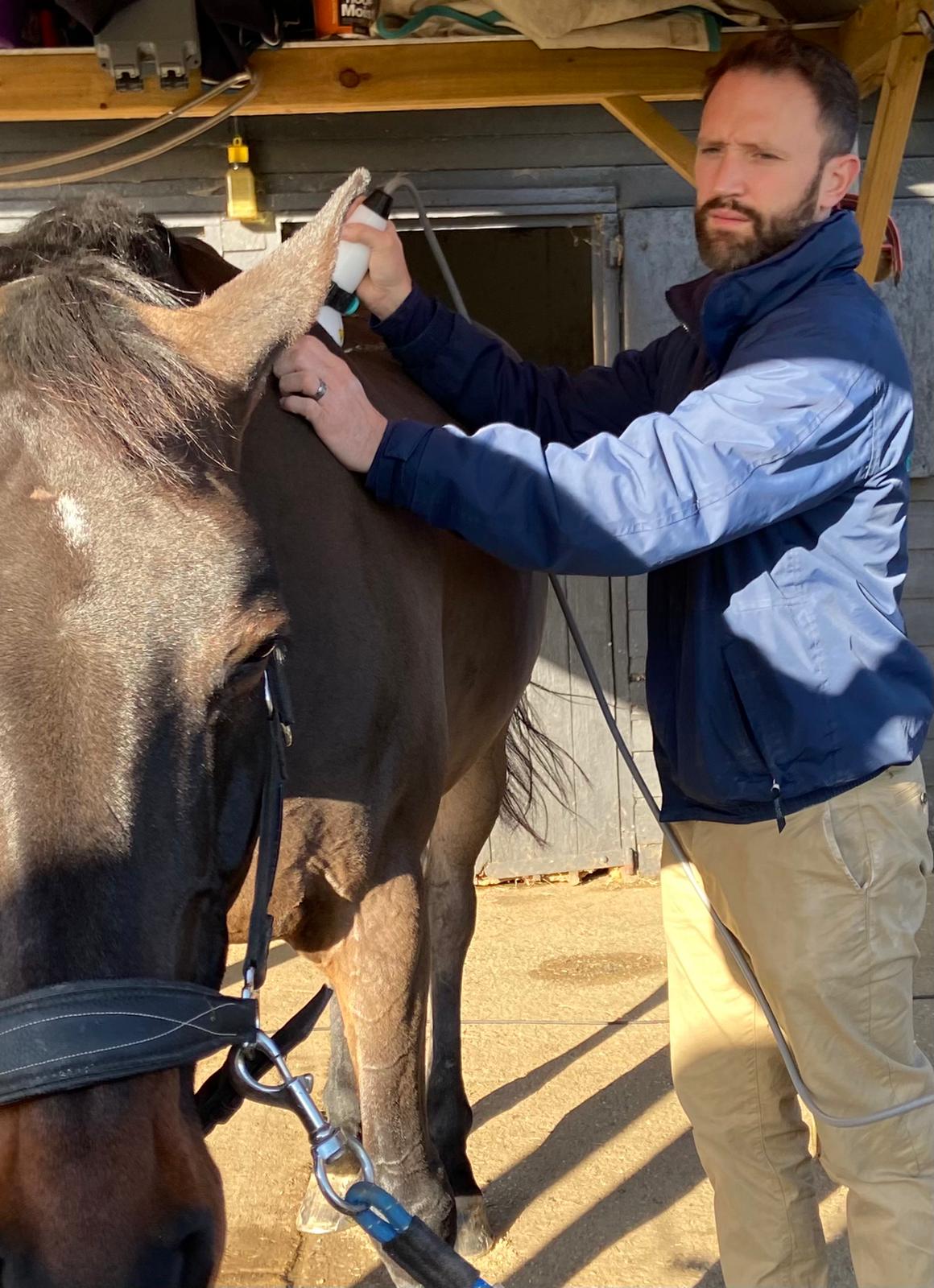
PulseVet Shockwave Therapy
Portable Gastroscopy
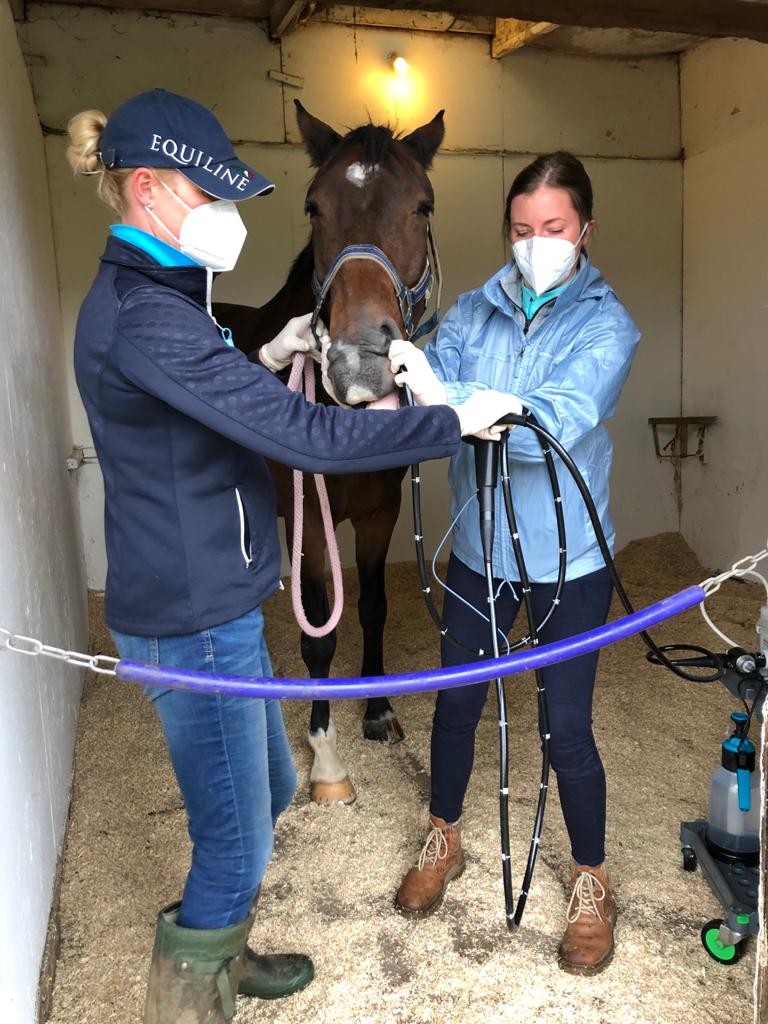
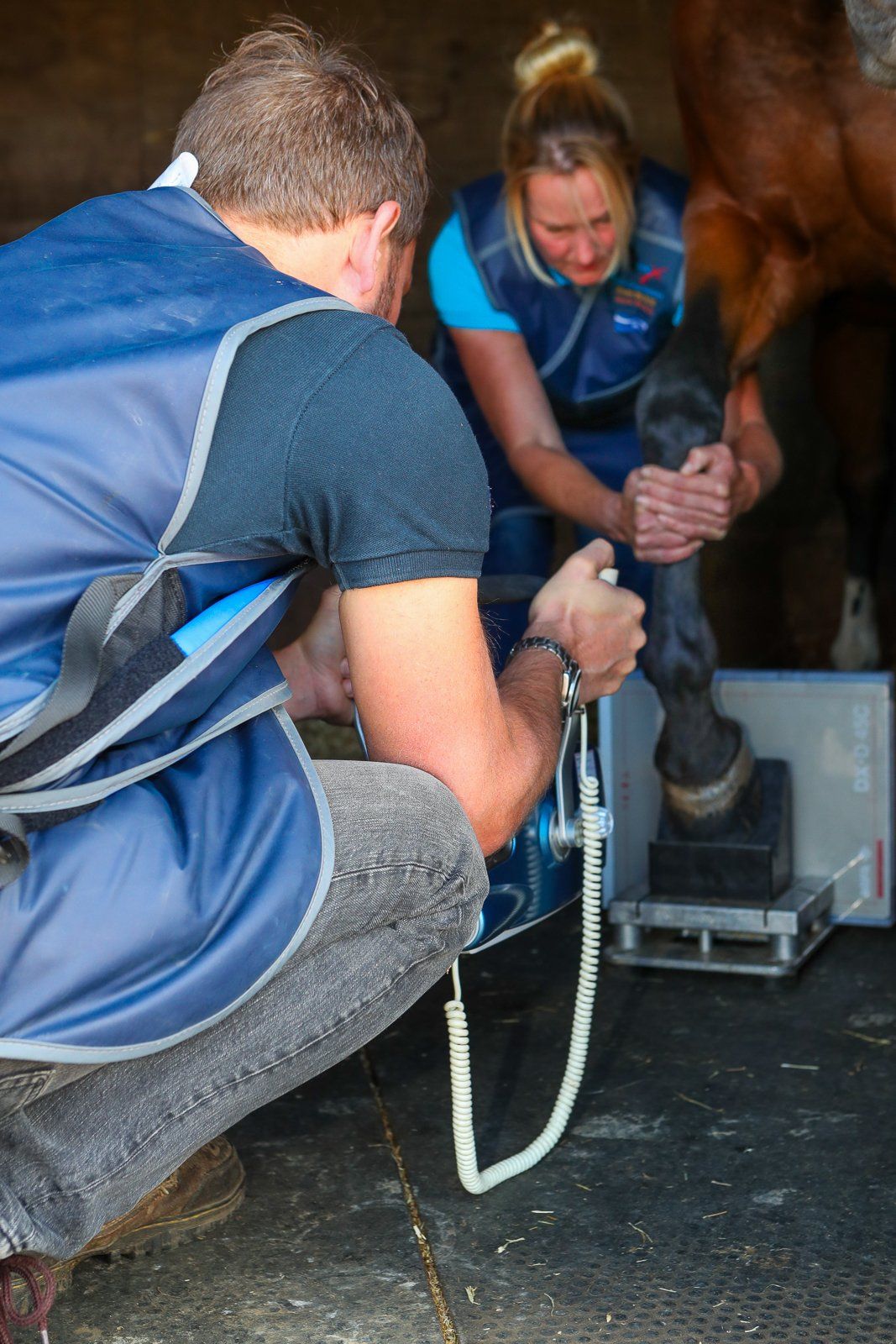
Diagnosing Pain & Lameness
- A lameness or performance examination can be carried out in the comfort of your horse or pony's home
- Their gait will be assessed in walk and trot in a straight line/on the lunge and if required; ridden under saddle
- Nerve blocks may be used as part of the lameness assessment to isolate pain. A small amount of short acting local anaesthetic will be injected around a joint or soft tissue structure
- X-ray may be required and can show bony changes or lesions in the limb
- Ultrasound may be used to examine soft tissue structures
- In some instances more advanced imaging such as MRI or bone scan is required for further diagnosis and our reception will be happy to refer you to one of the hospitals in our area
- Our vets can collaborate with your farrier and physio to provide your horse the best chance of returning to work
- We believe that you know your horse best so if you have any concerns about their performance or behaviour don't hesitate to get in touch
Joint Medications
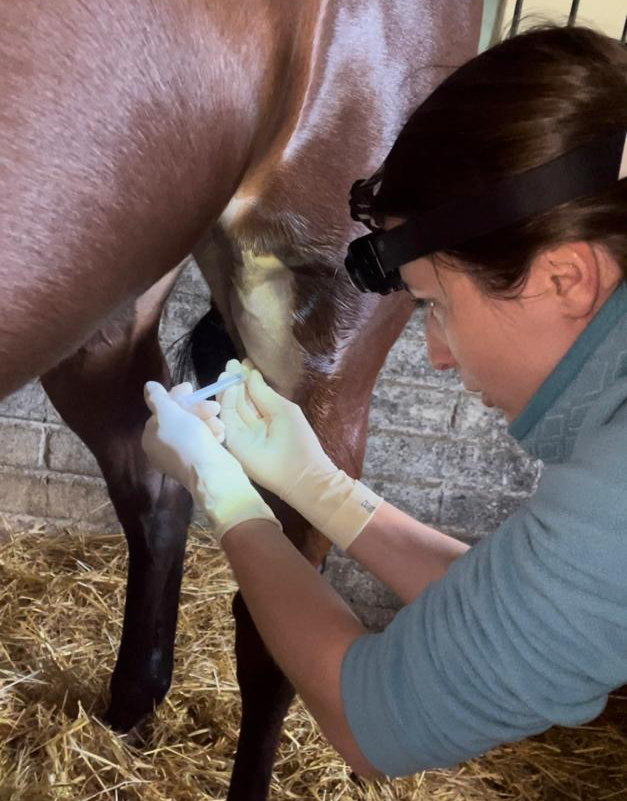
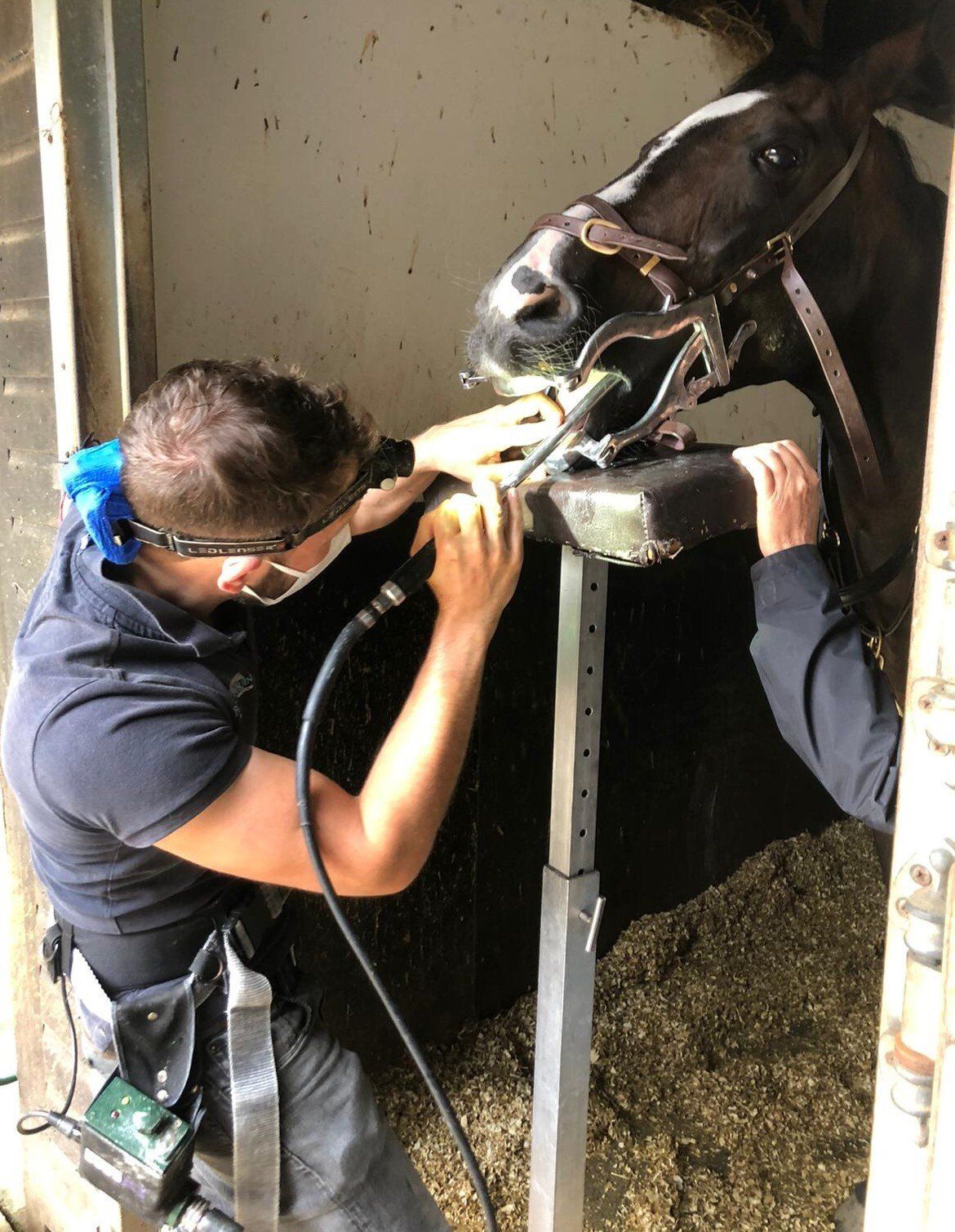
Dental Work
Comprehensive 24/7 Care
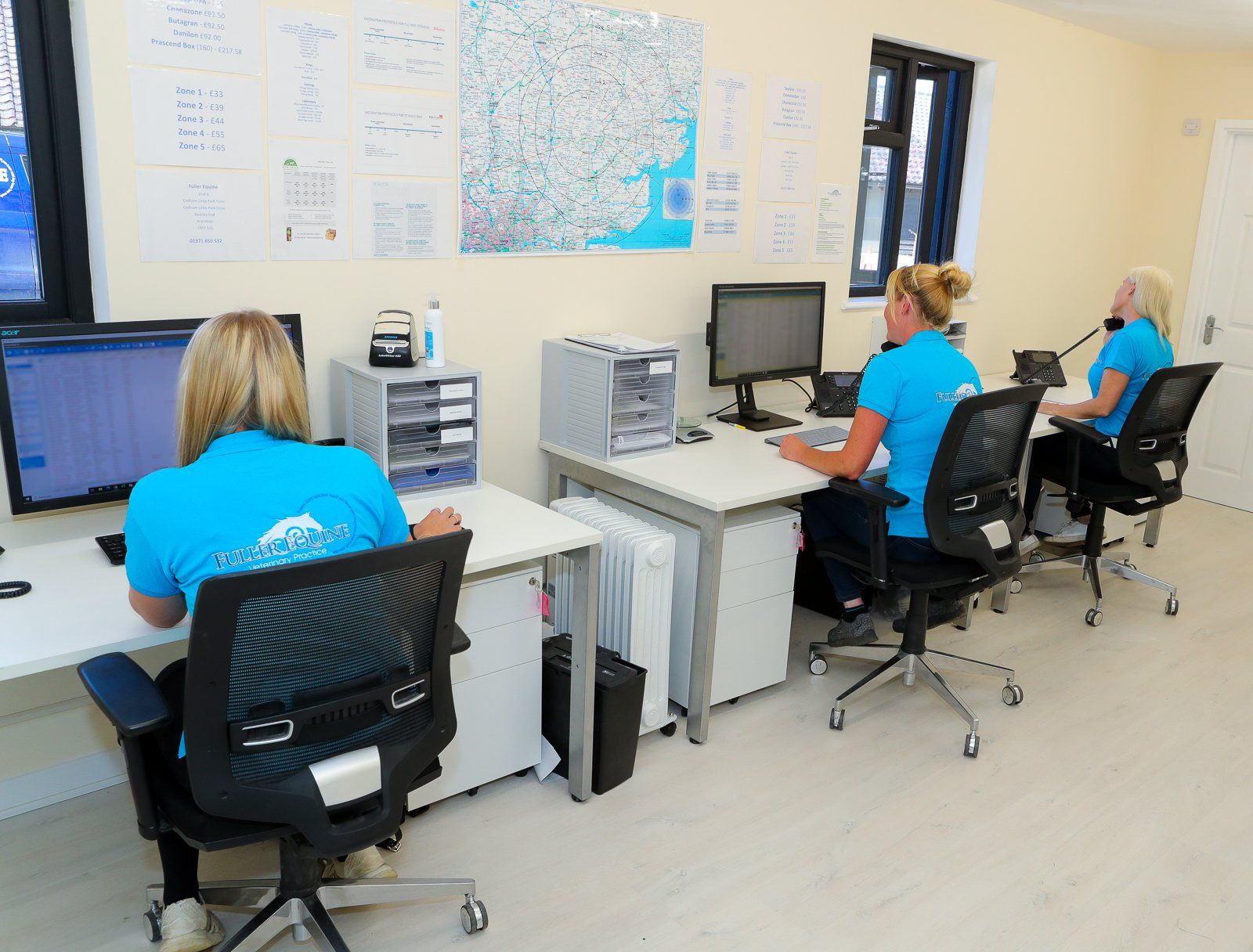

Equine Vaccinations
- 1st and 2nd vaccinations are 21-92 days apart, and 2nd and 3rd vaccinations are 150-215
- Subsequent vaccinations are administered annually
- Specialist vaccinations administered if necessary
What the Equinois Q can do for your horse:




Pre-purchase
Examinations (PPE)
- Stage 1: Preliminary examination
This is a thorough external examination of the animal at rest using visual observation, palpation and manipulation to detect clinically apparent signs of injury, disease or physical abnormality. It includes an examination of the incisor teeth, a thorough examination of the horse’s eyes in a darkened area and auscultation of the horse’s heart and lungs at rest. Examination of the eyes does not include dilating the pupil but should include examination of internal and external structures. The examination does not include examination of the inside of the prepuce (sheath), a detailed mouth examination with a speculum, a height measurement or any examination for pregnancy.
- Stage 2: Walk and trot, in hand
The animal is walked and then trotted in hand to detect abnormalities of gait and action. Ideally this is carried out on firm, level ground. The horse is turned sharply each way and is backed for a few paces. Flexion tests of all four limbs and
trotting in a circle on a firm surface may be carried out if the examining veterinary surgeon considers it safe and appropriate to do so.
- Stage 3: Exercise phase
The horse is given sufficient exercise to:
1. Allow assessment of the horse when it has an increased breathing effort and an increased heart rate.
2. Allow assessment of the horse’s gait at walk, trot, canter and, if appropriate, gallop.
3. Allow assessment of the horse for the purpose of stage five.
If ridden exercise is not undertaken then this stage may be conducted by exercising the horse on a lunge. It should be made clear on the certificate what form of exercise was undertaken.
- Stage 4: Period of rest and re-examination
The horse is allowed to stand quietly for a period. During this time the respiratory and cardiovascular systems may be monitored as they return to their resting levels.
- Stage 5: Second trot up
The animal is trotted in hand again to look for any signs of strains or injuries made evident by the exercise and rest stages. Flexion tests and trotting in a circle
Flexion tests and trotting in a circle on a firm surface are not mandatory parts of the standard procedure, but they can sometimes provide useful additional information about a horse. There may be circumstances when the examining veterinary surgeon concludes that it is unsafe or inappropriate to perform such tests.
- Blood SampleDescribe the item or answer the question so that site visitors who are interested get more information. You can emphasize this text with bullets, italics or bold, and add links.
The certificate and opinion
- Incomplete examinations
If any parts of the five stages are omitted for any reason, the opinion given is based purely upon those parts of the examination that were completed. The incomplete examination will not have identified any clinical signs of disease, injury or abnormality that could only have been revealed by a part of the standard procedure that was omitted.
If the purchaser requests a limited (two-stage) examination, the examination will be limited in its scope and may not detect
important clinical factors that could otherwise influence their decision to purchase the horse.
- Previous treatments
The horse may have received previous or concurrent veterinary treatment unknown to the examining veterinary surgeon. This may be so even where the examining veterinary surgeon is the seller’s regular veterinary surgeon and has access to clinical records for the horse. At the time of the examination the horse may have been subject to some previously administered drug or medicament having the effect of masking or concealing some disease, injury or physical abnormality that might otherwise have been clinically discover-able. A blood sample taken at the time of the examination may be used later to seek to determine this.
- Ownership
The certificate serves to identify the horse that was examined, but it is not the responsibility of the examining veterinary surgeon to ascertain that the declared seller has legal title in the horse. It is the responsibility of the purchaser to satisfy themselves as to the ownership of the horse before purchase and to verify the records of any microchip with the relevant database.
- Age
Without appropriate paper records from foal-hood it is not possible to confirm the age of a horse with accuracy. Estimates of age based on a dental examination are imprecise and unreliable and exact ageing using dentition alone should be avoided. In the absence of documentary evidence, the term ‘aged’ may be used to refer to a horse considered after examination to be over 15 years of age.
- Vices
Vices are objectionable habits, but are not necessarily detectable during the examination. However, if vices, or evidence of vices, are observed during the examination they should be reported to the purchaser and recorded on the certificate and taken into account in the concluding opinion.
- Seller’s warranty
The opinion provides no assurances in respect of matters that can only be established by a seller’s representations to the purchaser. A seller’s warranty is a matter between the seller and the purchaser and is not the responsibility of the examining veterinary surgeon. The purchaser should consider obtaining a written warranty from the seller covering, for example, matters such as medical or surgical history, height, freedom from vices, temperament, non-administration of drugs prior to the examination and the horse’s previous or existing uses and performance levels.
- Height
For the purposes of this examination, the height of a horse or pony is not the concern of the examining veterinary surgeon.
- Insurance
Where possible and if required, the prospective purchaser is advised to confirm that they are able to obtain suitable insurance cover before purchasing the horse.
NB. Pre-purchase examination certificates are suitable for submission to insurance companies with a proposal for insurance of the horse. Insurance examinations carried out for an existing owner of a horse may follow the same format as the five-stage pre-purchase examination, but they will not include an opinion and should not be interpreted as a pre-purchase examination.
Insurance examinations should be recorded using the “Certificate of Examination of a Horse for Insurance Purposes”.
At this stage according to the vetting findings it may be suggested that further examination is required. Fuller Equine vets are equipped with digital X-ray, ultrasound and endoscopes so this exam can usually be made immediately.





